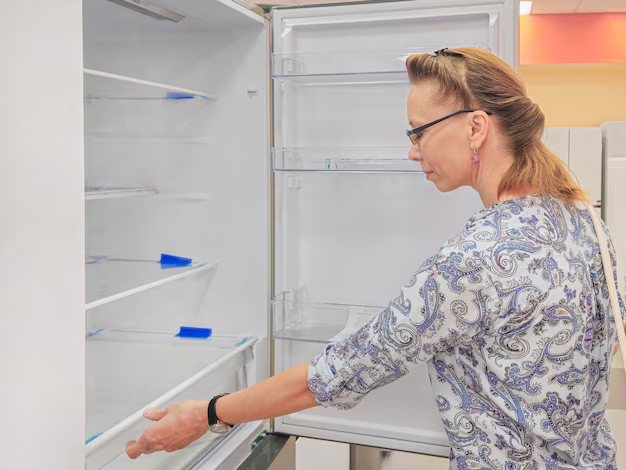Efficiently Defrosting Your Refrigerator: A Step-by-Step Guide
You've noticed that your refrigerator isn't running as efficiently as it once did. Maybe it's the frost buildup that's causing it, leading you to wonder: "How long does it take to defrost a refrigerator?" If this sounds familiar, you're not alone. A well-maintained refrigerator is essential for keeping your food fresh and your energy bills low, so understanding the defrosting process is key.
In this comprehensive guide, we will explore the defrosting process, provide practical tips for quick and effective defrosting, and share essential information on how to maintain your refrigerator to prevent frost buildup in the future.
Why Defrost Your Refrigerator?
The Problem of Frost Buildup
Frost forms when warm, humid air enters the fridge or freezer and condenses upon contact with the cold interior surfaces. A thin layer of frost is normal, but excessive frost can:
- 🧊 Reduce the storage space in both the fridge and freezer sections.
- ⚡ Decrease energy efficiency, causing your refrigerator to work harder and consume more electricity.
- 🛠 Lead to potential mechanical issues over time if not addressed.
Benefits of Regular Defrosting
Regular defrosting helps maintain your refrigerator's performance and extends its lifespan. Energy savings, optimal cooling, and adequate storage space are just a few perks of keeping frost at bay.
How Long Does It Take to Defrost a Refrigerator?
Factors Affecting Defrost Time
Several factors influence the time it takes to defrost a refrigerator, including:
- The amount of frost buildup: Heavier buildups take longer to melt.
- The model and age of the refrigerator: Older or larger units may take more time.
- The defrosting method you choose: Each technique has its own timeline.
Typical Defrosting Durations
- Manual defrosting may take anywhere from a few hours to a full day, depending on the frost level.
- Using a defrost timer function (if available) can automate the process and usually completes within a few hours.
- DIY methods, like using a hairdryer or heater, can speed up the process significantly, taking 30 minutes to several hours.
Step-by-Step Guide to Defrosting Your Refrigerator
Here's a detailed look at how you can efficiently defrost your refrigerator:
Preparation: Safety First!
- 🍴 Empty the refrigerator, transferring perishable items into a cooler with ice packs.
- 🔌 Unplug the appliance to ensure safety and avoid electrical accidents.
- 🛡 Protect the floor from water damage by laying down towels or rags to soak up melting ice.
Manual Defrosting Methods
Natural Defrosting
- Open the Doors: Leave the doors open to allow warm air to circulate inside.
- Patiently Wait: Natural defrosting is the simplest method but requires time.
- Monitor: Check periodically, wiping away melted water with towels.
Speed Up via Fan or Heater
- Position a Fan: Direct a fan at the interior to blow warmer air inside.
- Use a Heater: Place it nearby, being cautious not to overheat plastic components.
- Sweep and Dry: Regularly squeegee the water into a container and dry surfaces.
Hairdryer Method
- Hairdryer Settings: Select the medium heat setting to avoid damage.
- Inch by Inch: Focus on specific areas, maintaining a safe distance to prevent overheating or melting plastics.
- Wipe Frequently: As frost melts, use cloths to dry areas.
Preventing Frost: Proactive Maintenance Tips
Once you've defrosted your refrigerator, keeping it frost-free is easier with these proactive measures:
Keep the Doors Sealed
- Check Door Seals: A tight seal is your first line of defense against warm air ingress.
- Regular Inspection: Look for cracks or wear and address promptly.
Maintain Consistent Temperatures
- Optimal Settings: Set your fridge to about 37–40°F (3–4°C) and freezer at 0°F (−18°C).
- Keep Cool: Avoid keeping the fridge door open for long periods.
Avoid Overcrowding
- Air Circulation: Allow space around items to promote proper air flow.
- Organized Storage: Group similar items and consider using bins.
Quick Tips: Refrigerator Maintenance Cheat Sheet
To help you maintain your refrigerator more effectively, here is a quick cheat sheet:
- Regularly Defrost every 6 months or when frost is thicker than ¼ inch.
- Clean Coils to ensure efficient cooling every six months.
- Check Seals for airtight closure.
- Limit Warm Air by quickly organize and retrieve items during use.
- Minimize Humidity with covered containers or wraps.
Closing Insight: Maintain Your Fridge for Efficiency and Longevity
A well-maintained refrigerator not only ensures your food stays fresh longer but also optimizes energy use, ultimately reducing costs. By understanding how long it takes to defrost your refrigerator and employing effective methods, you can ensure it runs smoothly for years to come.
Incorporating these practices into your regular home maintenance routine will help you detect and resolve issues before they become larger problems. With these tips, you're fortified with the know-how to keep your fridge in tip-top shape. 🌟
